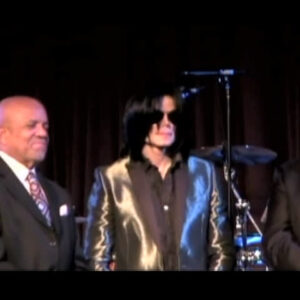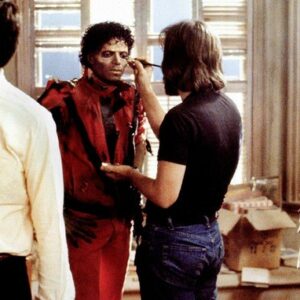Aretha Franklin, widely known as the “Queen of Soul,” left an indelible mark on the world of music that transcends genre, time, and cultural barriers. Her powerful voice, emotional depth, and versatility transformed her from a preacher’s daughter singing gospel in a Detroit church into one of the most revered figures in popular music. Franklin’s career, spanning more than five decades, wasn’t just about hit records but about a profound artistic journey that mirrored the social, political, and musical shifts of her time. Her ability to fuse gospel’s raw passion with secular sounds like jazz, blues, and R&B, and later embrace pop, funk, and rock, set her apart as a true musical icon.
In an era where African American artists were often sidelined, Franklin’s bold performances became synonymous with empowerment and self-expression. She not only gave voice to personal emotions but also captured the essence of the civil rights and feminist movements. To understand the depth of her impact, it is crucial to examine the different phases of her career and how she continuously evolved, always staying ahead of the curve.
Early Influences and Gospel Roots
Born in Memphis in 1942 and raised in Detroit, Franklin was immersed in gospel music from an early age, and it became the foundation of her unique sound. Her father, Reverend C.L. Franklin, was a prominent Baptist minister and civil rights activist, and their home was frequented by musical luminaries like Sam Cooke and Mahalia Jackson. These early influences laid the groundwork for Franklin’s later fusion of gospel’s emotional intensity with secular music’s broader appeal.
By the time she was a teenager, Franklin was already recognized as a musical prodigy. Singing at her father’s New Bethel Baptist Church, her voice captured the essence of the gospel tradition—deeply spiritual, raw, and emotionally charged. These formative years not only shaped her vocal abilities but also gave her a sense of purpose and responsibility as a performer. Gospel music, after all, was more than entertainment; it was a means of expression, of healing, and of hope. This deeply ingrained connection to gospel would inform every note she sang, even as she transitioned to secular music later in her career.
Transition to Secular Music
Franklin’s shift from gospel to secular music in the early 1960s was not without its challenges. She began her career under the management of John Hammond at Columbia Records, where she recorded jazz and blues-oriented material that showcased her vocal prowess but failed to fully capture the energy of her live performances. While these early albums, including Aretha: With The Ray Bryant Combo (1961) and Unforgettable: A Tribute to Dinah Washington (1964), displayed her jazz influences and exceptional vocal technique, they did not propel her to the heights she would later reach.
It wasn’t until Franklin left Columbia for Atlantic Records in 1966 that she found her true musical identity. Atlantic producer Jerry Wexler recognized that Franklin’s gospel roots could be effectively blended with the emergent soul music sound. Wexler encouraged her to bring the church’s passion to secular music, and the result was electrifying. Franklin’s ability to infuse R&B and blues with gospel fervor was something entirely new. This fusion laid the groundwork for her breakthrough success in the late 1960s.
Breakthrough and Rise to Fame
Franklin’s breakthrough came in 1967 with the release of I Never Loved a Man the Way I Love You, her first album with Atlantic Records. The title track and its lead single, “Respect,” catapulted Franklin into stardom. “Respect,” originally written by Otis Redding, became an anthem not just for women’s empowerment but for the broader civil rights movement. Franklin’s rendition of the song was a bold assertion of independence, both personal and political, at a time when African Americans and women were fighting for their rights.
The period between 1967 and 1970 saw Franklin release a string of iconic hits that solidified her status as the Queen of Soul. Songs like “Chain of Fools,” “(You Make Me Feel Like) A Natural Woman,” and “Think” became timeless classics. Franklin’s voice during this era was a revelation—it was strong yet vulnerable, confident yet deeply emotive. She could convey joy, pain, and resilience all in one breath. Her ability to tap into universal human emotions made her music resonate across racial and cultural lines.
Franklin’s influence extended far beyond her music. She became a symbol of strength and empowerment, especially for African American women. Her music was a soundtrack to the civil rights movement, and her personal dignity and confidence served as an inspiration to many.
1970s Experimentation
As the 1970s progressed, Franklin continued to dominate the charts, but she also began to experiment with different musical genres. While soul remained at the core of her sound, she started incorporating elements of pop, funk, and even rock into her music. Albums like Young, Gifted and Black (1972) and Sparkle (1976) showed her willingness to explore new musical territories.
Her collaboration with Curtis Mayfield on the soundtrack for the film Sparkle was a significant departure from her earlier work, blending R&B with the urban funk sound that was gaining popularity at the time. Songs like “Something He Can Feel” demonstrated Franklin’s ability to evolve while still maintaining her soulful essence. She was no longer just a soul singer—she was an artist willing to push boundaries and redefine her sound.
This period also saw Franklin dabbling in rock music, most notably with her cover of The Band’s “The Weight” and her performance at the Fillmore West, a venue more associated with rock acts like The Grateful Dead and Jimi Hendrix. Her ability to cross genres without losing her distinct voice further cemented her status as a versatile and boundary-breaking artist.
1980s and Reinvention
As the 1980s arrived, Franklin faced a new challenge: the rise of a younger generation of artists and the shift toward more polished, radio-friendly productions. Yet, rather than fade into the background, Franklin reinvented herself once again. She embraced the trends of the decade, working with contemporary producers and exploring new styles.
Her 1985 album, Who’s Zoomin’ Who?, marked her commercial comeback. The lead single, “Freeway of Love,” became one of her biggest hits of the decade, blending her soulful voice with the polished production typical of 1980s pop music. Collaborating with artists like George Michael on “I Knew You Were Waiting (For Me)” further showcased her ability to adapt to the times without losing the essence of what made her voice so powerful.
Franklin’s presence on MTV, a platform that was initially criticized for its lack of representation of African American artists, was a testament to her enduring relevance. She could stand alongside younger pop stars like Michael Jackson and Madonna and still command the stage with the gravitas that only a true legend could bring.
Later Years and Legacy
In her later years, Franklin continued to release music and perform, proving that she could still captivate audiences. Albums like A Rose is Still a Rose (1998) saw her embracing hip hop-influenced sounds, while her performance at President Barack Obama’s 2009 inauguration served as a reminder of her status as an American cultural icon.
Franklin’s legacy is not just in her music but in her ability to transcend the limits of genre, race, and time. She remained true to her gospel roots while constantly evolving, staying relevant in a music industry that underwent numerous changes throughout her career. Her influence can be heard in the voices of countless artists, from Whitney Houston to Beyoncé, and her songs continue to be celebrated as timeless expressions of love, empowerment, and resilience.
Factors Influencing Her Style Evolution
Franklin’s stylistic evolution was influenced by a variety of factors, both personal and external. The changing cultural landscape, especially the civil rights and feminist movements, played a significant role in shaping her music. Franklin herself was a product of the times—her work reflected the social struggles of African Americans and women, and her music became a voice for those who felt unheard.
Collaborations with other artists also shaped her sound. Working with producers like Jerry Wexler, Curtis Mayfield, and Narada Michael Walden allowed her to explore new genres and experiment with different sounds. Personal experiences, including her triumphs and challenges, were always evident in her music. Her ability to channel her emotions into her performances is what made her music so relatable and powerful.
Conclusion
Aretha Franklin’s musical legacy is one of constant evolution. From her gospel roots to her reign as the Queen of Soul, Franklin’s ability to adapt, experiment, and reinvent herself ensured her place in music history. She was not just a singer—she was a storyteller, a trailblazer, and a symbol of resilience. Her voice, once described as “a gift from God,” will continue to inspire future generations of artists and listeners, ensuring that her impact is felt for decades to come.





